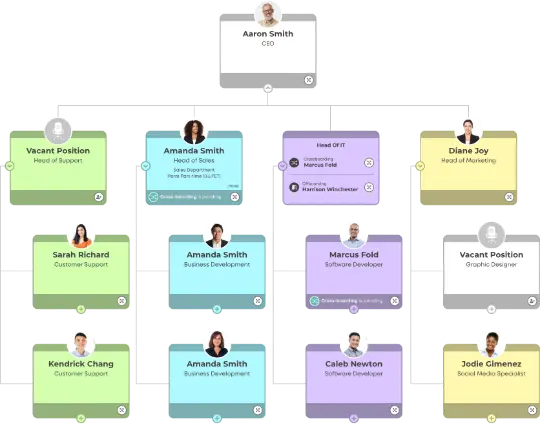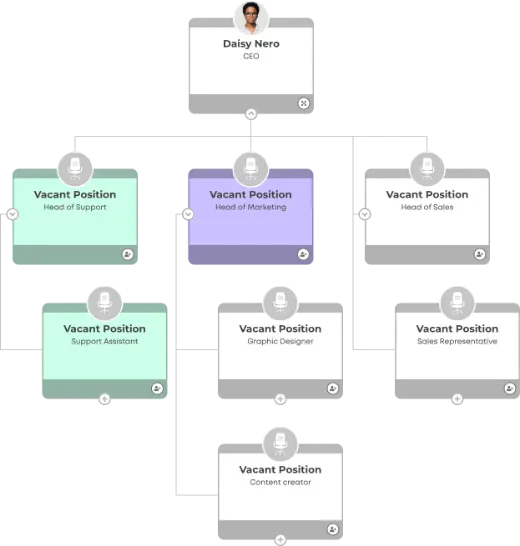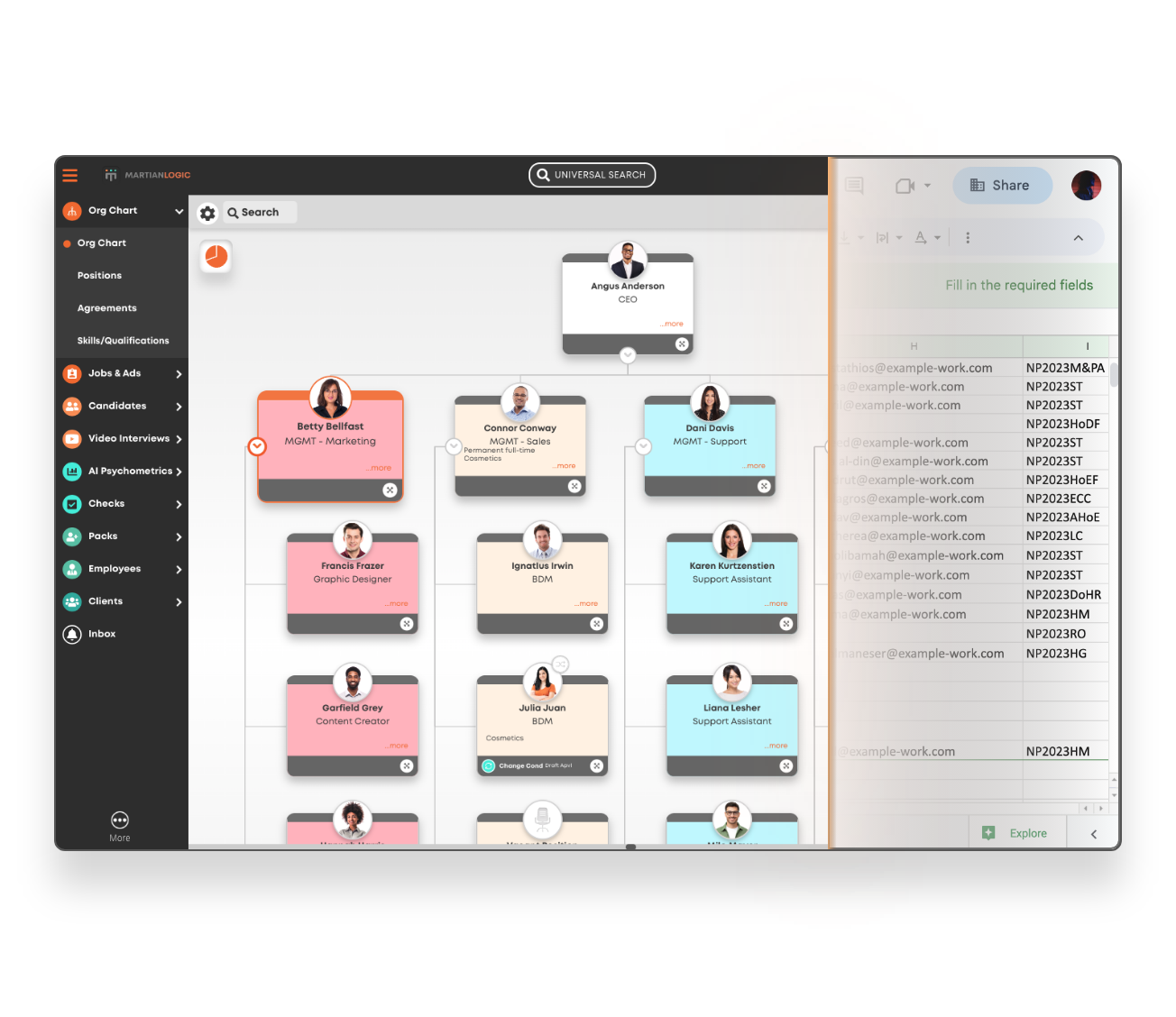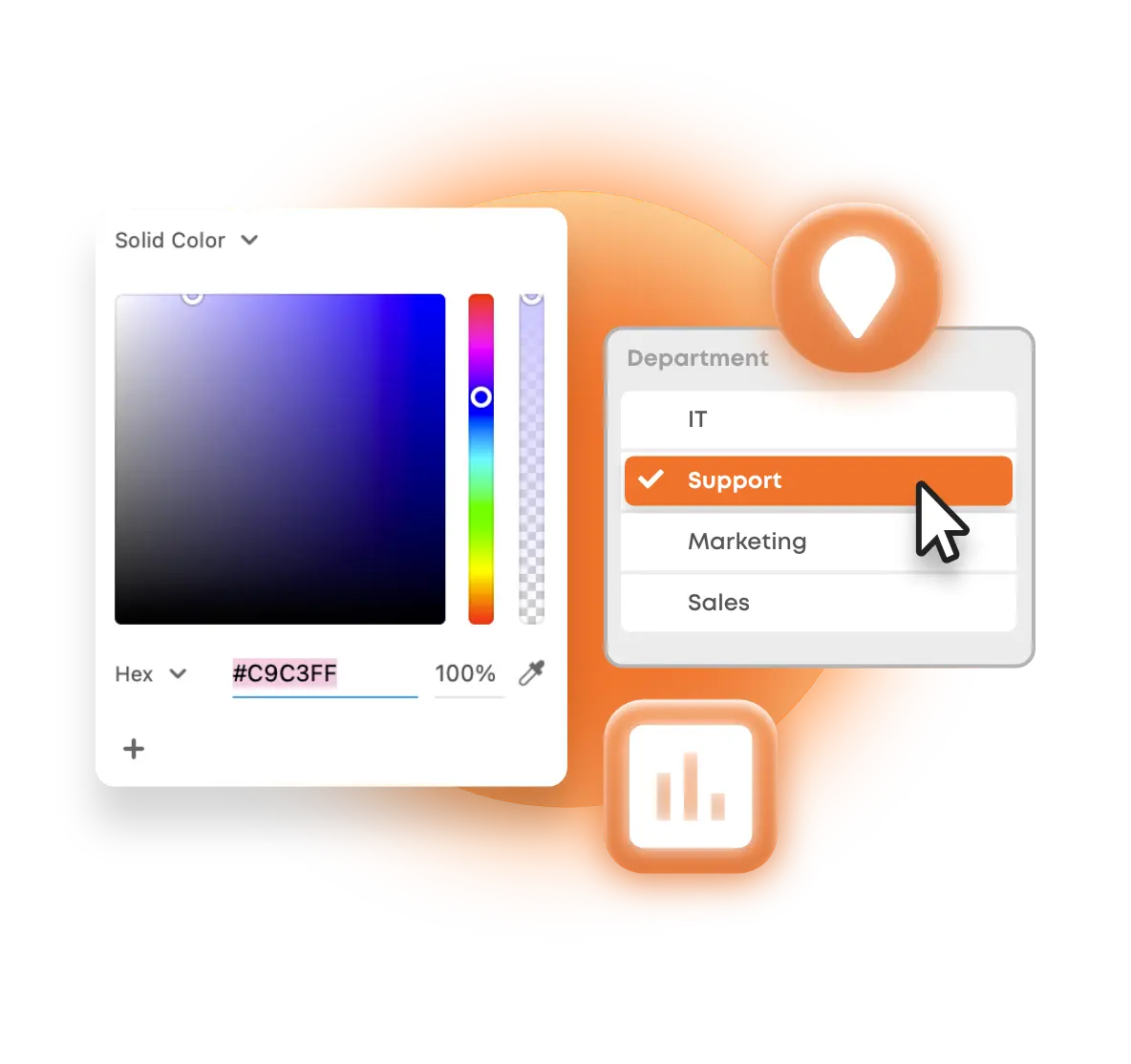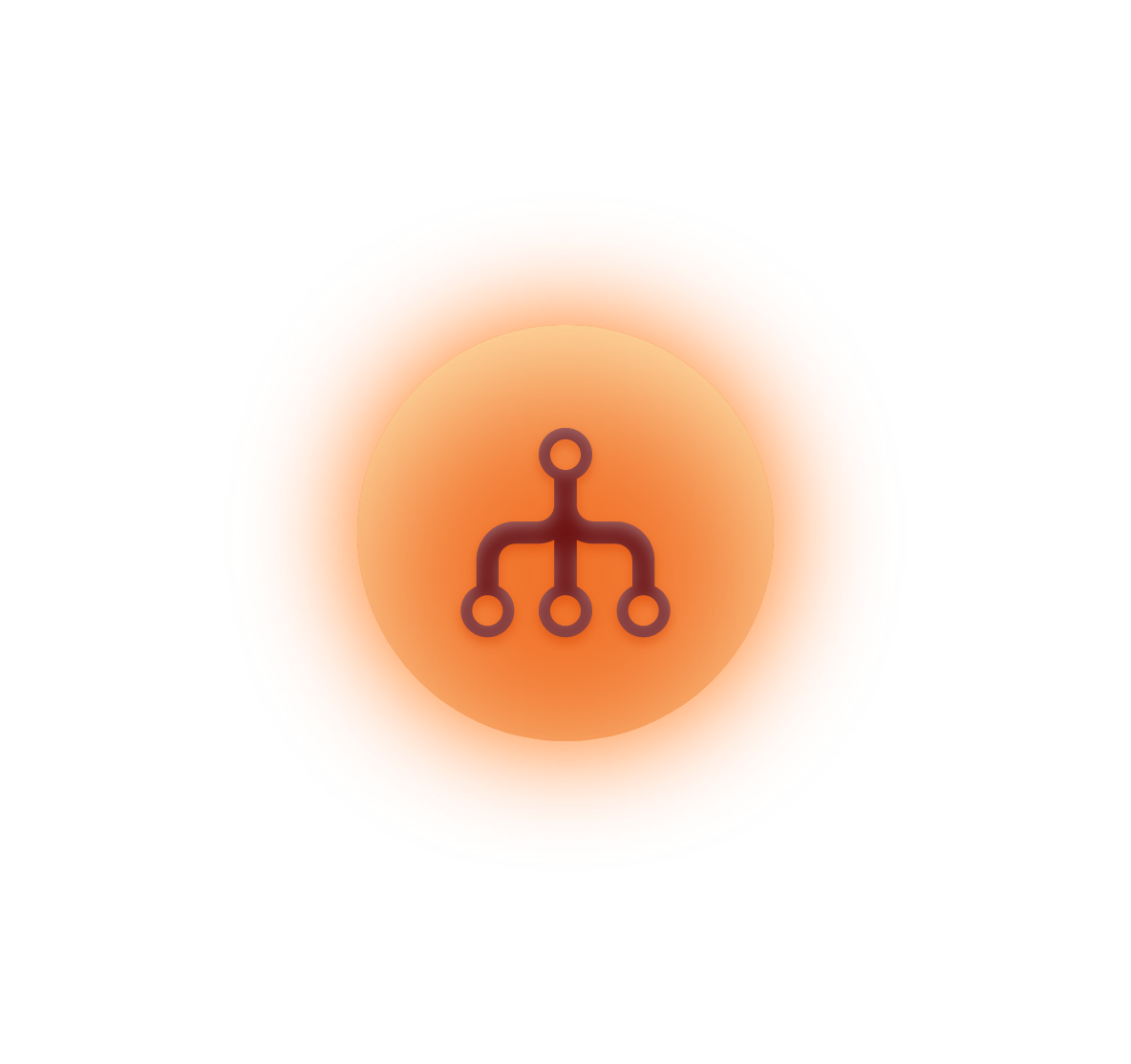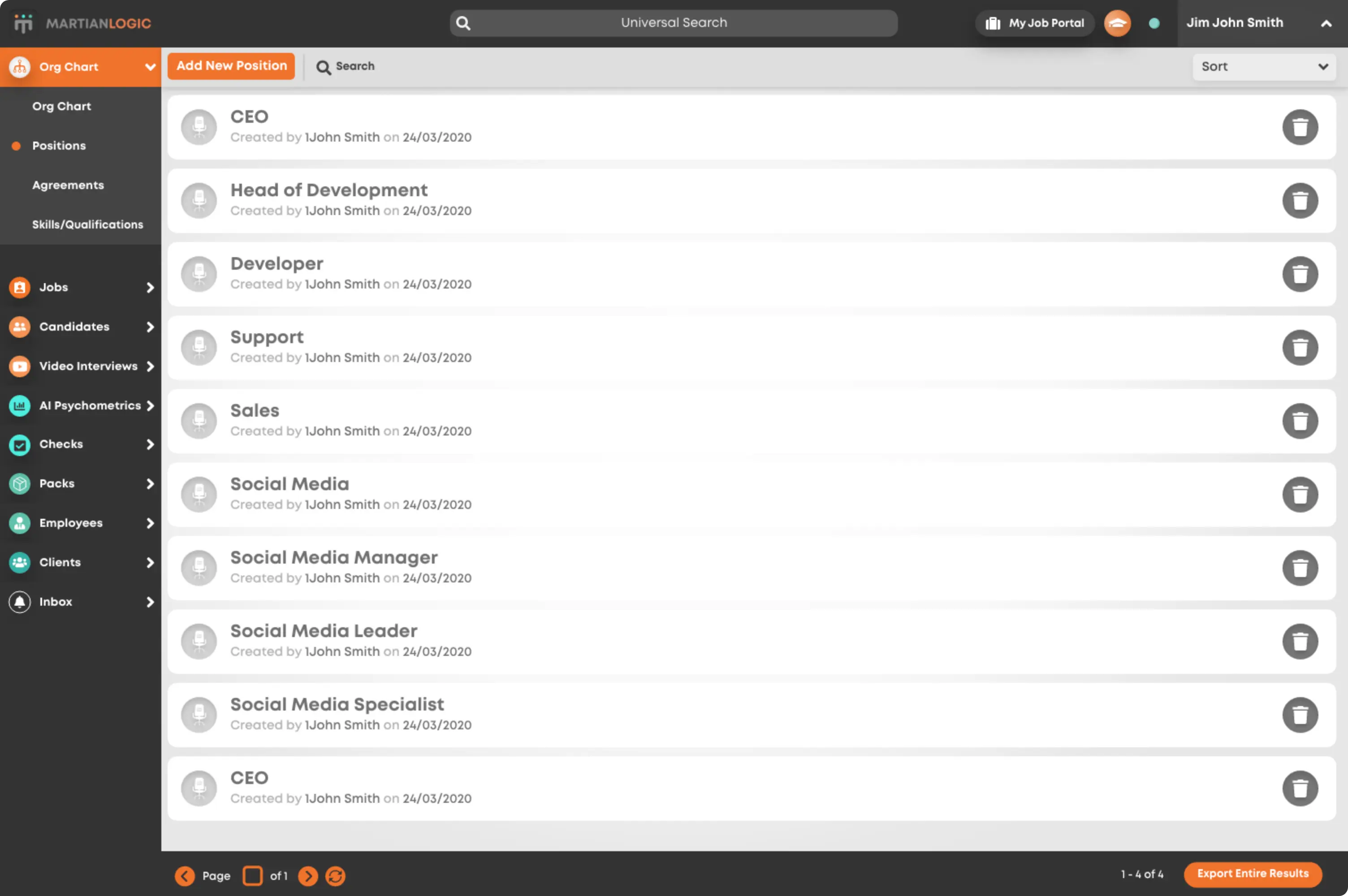
Not a diagram Building tool!
Not Visio! A specialised org chart builder, made for HR teams.
- Built for HR by HR
- 200+ features, Scalable & flexible
- The heart of our HRIS
- Multiple entities & brands
- Single source of truth (SSoT)
- Position & Remuneration libraries
Organizational charts are crucial for clarifying the structure of an organization, facilitating communication, and improving efficiency by providing a clear view of who does what and who reports to whom. They can vary in complexity, from simple linear structures for small businesses to complex, multi-layered diagrams for large corporations, highlighting the interconnections and the flow of information across the organization.
For managers and executives, org charts are instrumental in planning and decision-making, enabling them to identify gaps in the organizational structure, streamline processes, and allocate resources efficiently. They also facilitate coordination across departments by making it clear who is responsible for what areas, thus improving collaboration. Additionally, org charts are used in strategic planning and restructuring efforts, helping leaders visualize and implement changes more effectively. Externally, they provide stakeholders with insights into the company’s structure, enhancing transparency.
Overall, organization charts are not just static representations of a company’s structure but dynamic tools that support operational efficiency and strategic growth.
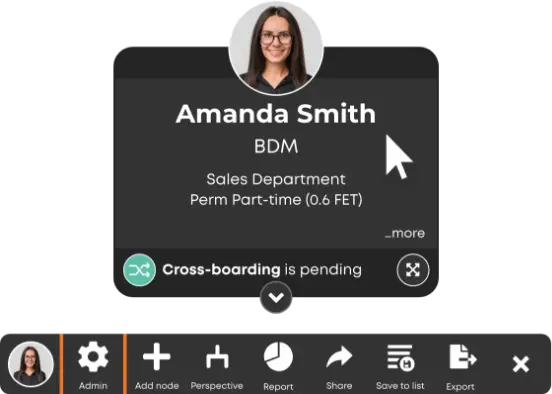
Utilize software specifically designed for org charts to enable easy edits and scalability. Finally, involve input from various departments to ensure accuracy and comprehensiveness. An effective org chart is not just a snapshot of your organization but a tool for growth and efficiency.
Choose a software tool or platform that suits your needs, offering flexibility for design and updates. Start with the highest authority at the top, typically the CEO or President, and work your way down through layers of management to individual contributors.
Use consistent shapes and lines to represent positions and reporting relationships, respectively. Ensure clarity by keeping the design simple and readable. Incorporate interactive elements if the chart will be used digitally, allowing users to click through for more details about each role. Regular updates are crucial as your organization evolves to keep the chart current and useful.
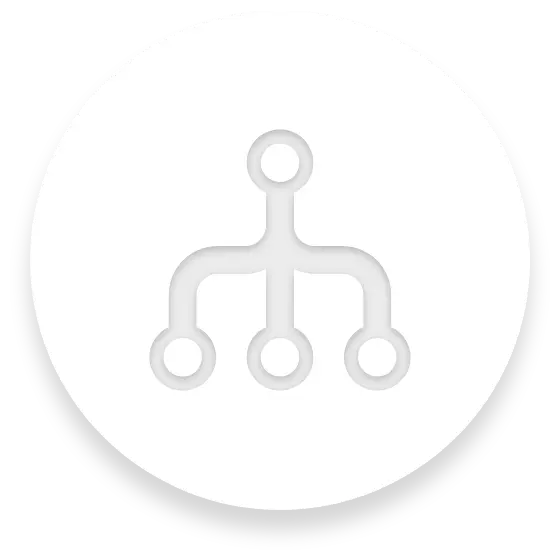
Pricing
FREE PLAN. PREMIUM. ENTERPRISE.
Free-Plan
- Instant, free & forever free
- Limited to 10 org chart nodes
- Awesome Import tool from Excel
- 200+ features
Premium
- Up to 20 org chart nodes
- Dedicated client-success professional
- Online support
- Unlimited users
- Share org chart on your Intranet
Enterprise
- Highly scalable, flexible & customizable
- No set-up cost, no lock-in contracts
- Remuneration & Position Libraries
- Phone support & training
- Unlimited users, custom access control
Apart from employee names and positions, the Martian Logic Org Chart lets you decide on what additional information is important to surface.
Choose to display division name, employment type, department, location/site, remuneration information… or even custom fields you might’ve created in the employee database. In a live SSoT manner, manage your data, your way.
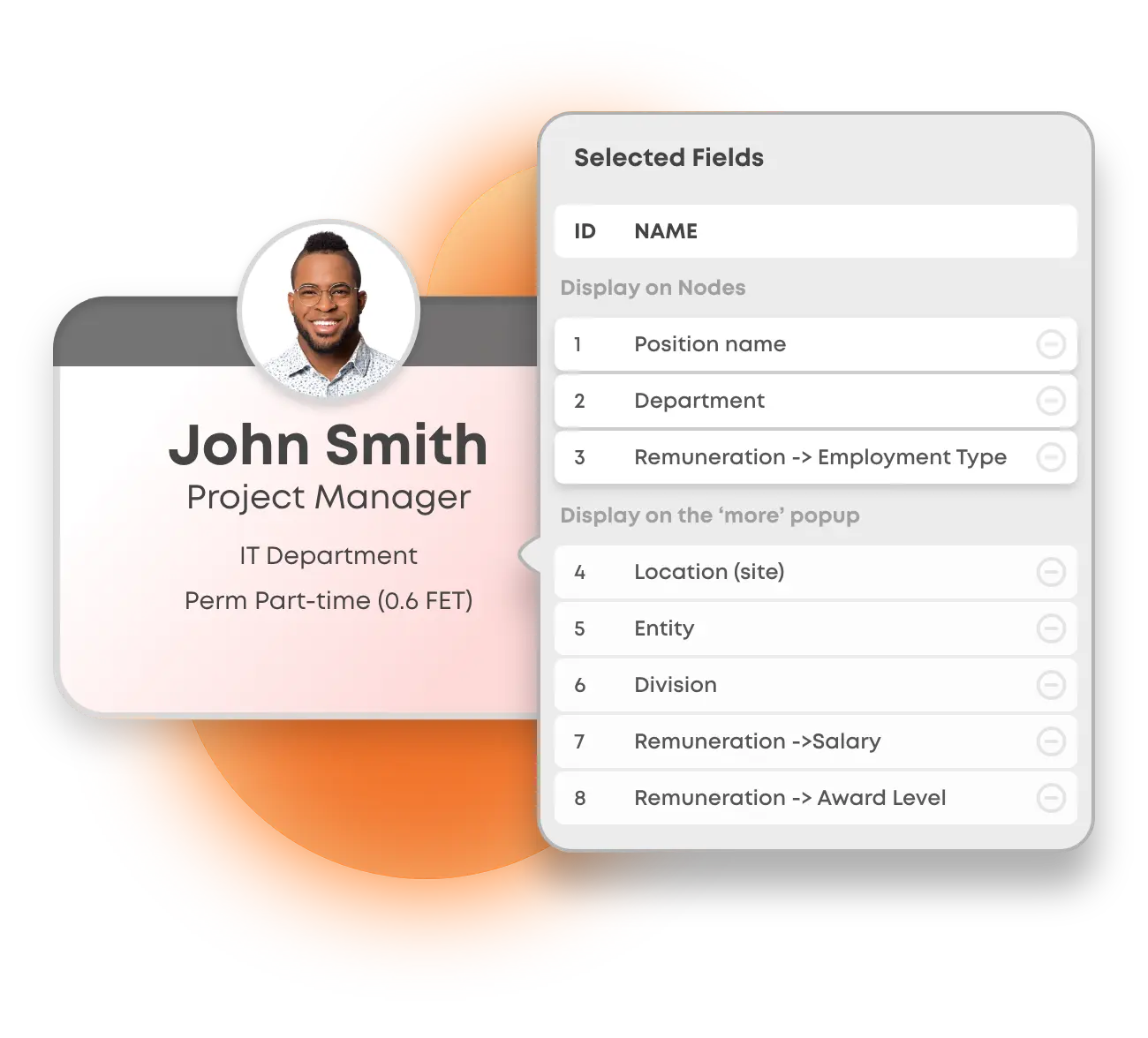
Whether it’s adding new departments, merging teams, changing reporting lines, or updating employee roles, these tools streamline and optimize the Org Chart maintenance process.
However, with our sophisticated access control you can, for example, limit the admin functions to the HR users and allow the managers to only see what’s on the surface of the nodes.
Out-of-the-box our org chart comes with 6 user roles, including Admin, HR, and Manager. If they’re not flexible enough for you, you can build your own custom-role that 100% satisfies your access control policy.
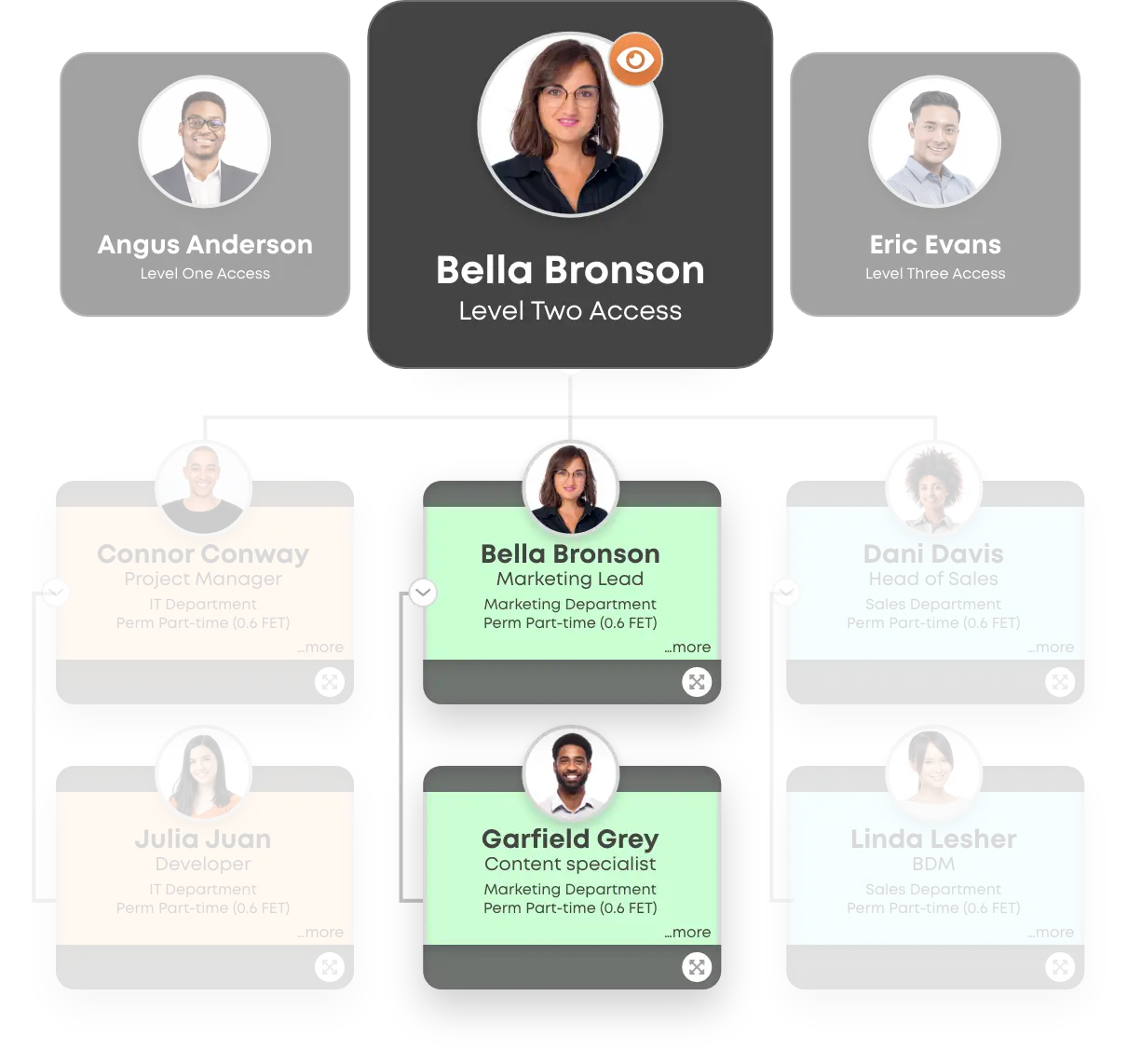
Customise and visualise your Org Chart in whichever way works best for you. Every organisation is different, and you don’t have to alter your business model for our org chart… our software will stretch, morph, and change to reflect your rules!
It’s all interconnected and baked together!
Your employee database, position library, remuneration library, and org chart are all linked, meaning each type of data is only stored once i.e. preserving data integrity and Single Source of Truth (SSoT).
As the heart of our HRIS,
our org chart module connects with the rest of your database via two-way veins that transport data in both directions. This ensures that the org chart always stays up-to-date to the second, so you never have to waste any effort on updating it yourself.

Recruiting & onboarding new employees
into your organisation will start from the org chart. So, the org chart is the first module to know that a new person has been added – not the last!
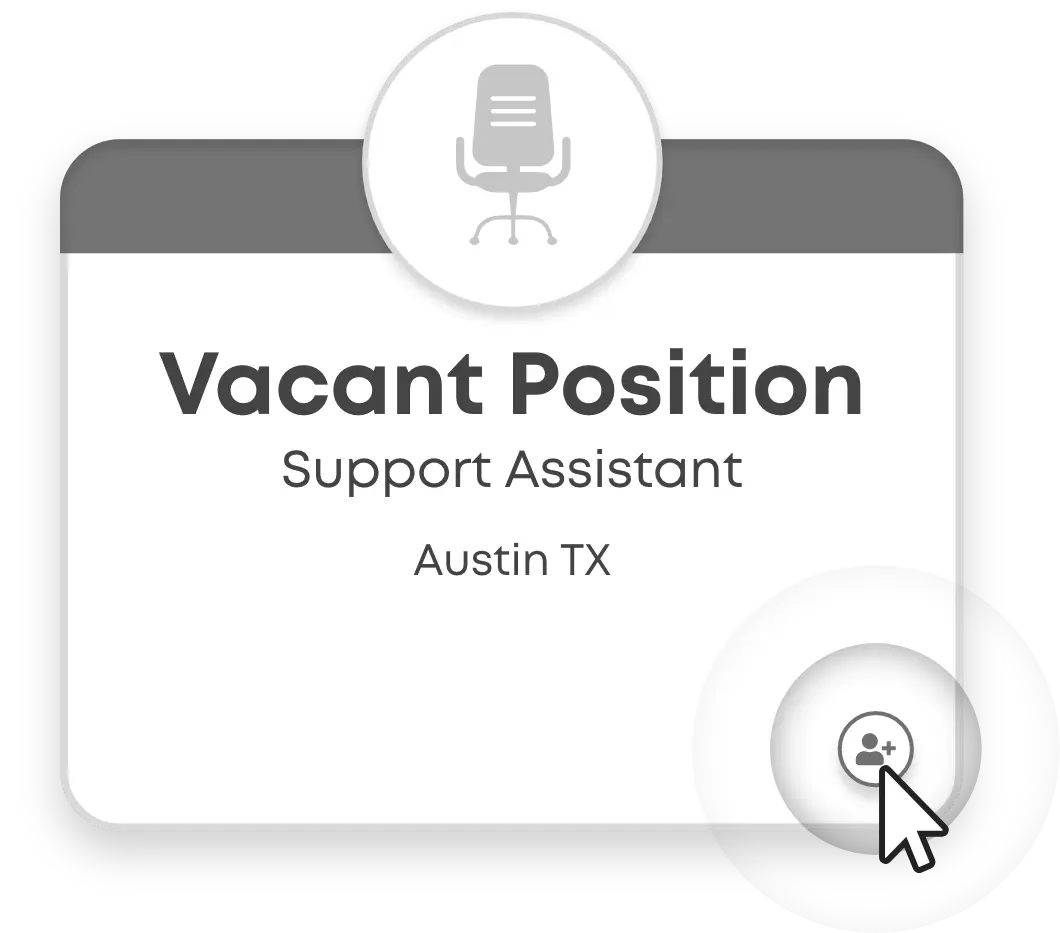
Off-boarding an employee
from your organisation also starts from the org chart – you simply find the employee you need to off-board, open the expand menu and select ‘Off-board’. This would trigger a full custom off-boarding process that ensures all the required steps are taken and all the relevant stakeholders are notified.

Change of conditions of an existing employee
such as moving an employee from a Casual to a ‘Perm Full-time’ employee, also starts from the org chart and triggers your custom-built approval form and approval workflow. Therefore, the org chart is also the first module In the platform to know.
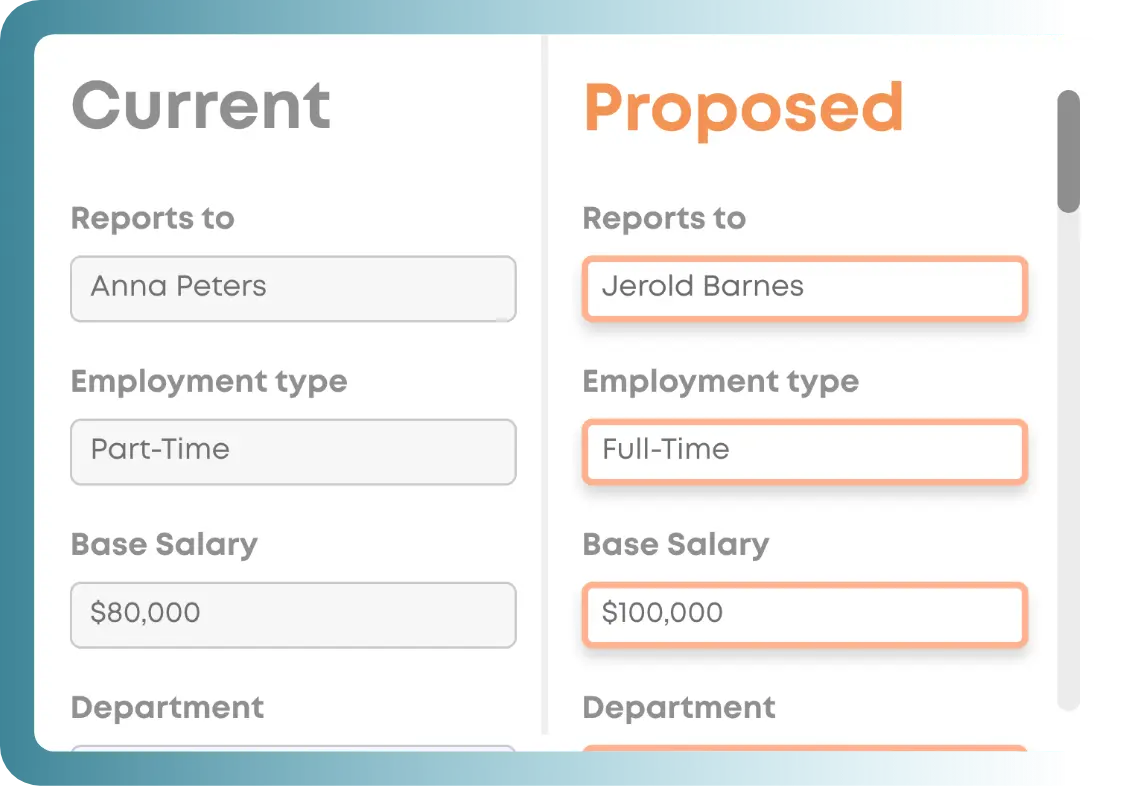
Organisational Chart FAQs For HR
Still have questions? Take a read of our HR experts’ answers to the most frequently asked questions about organisational charts.
